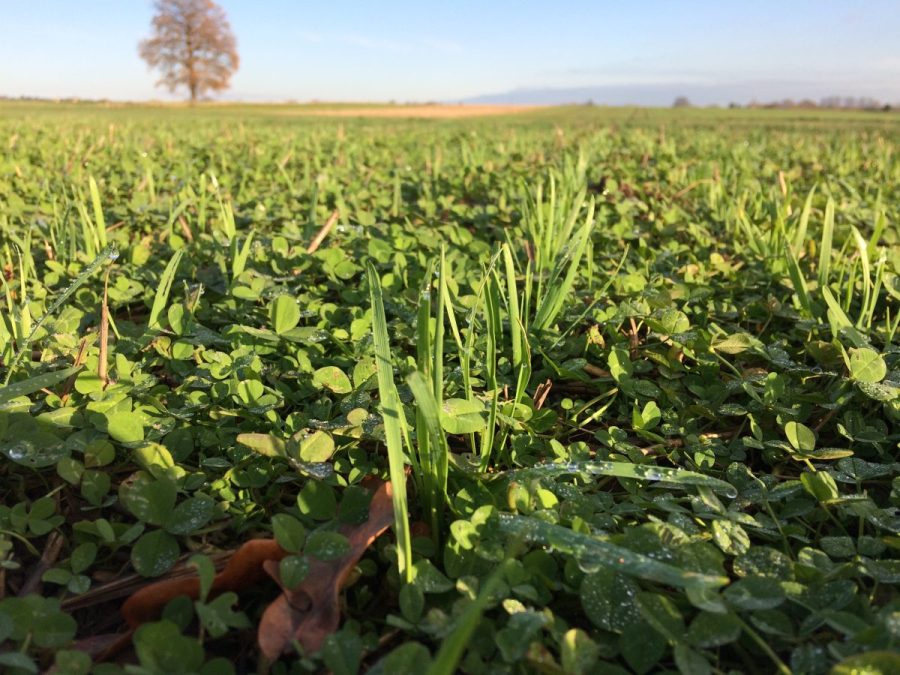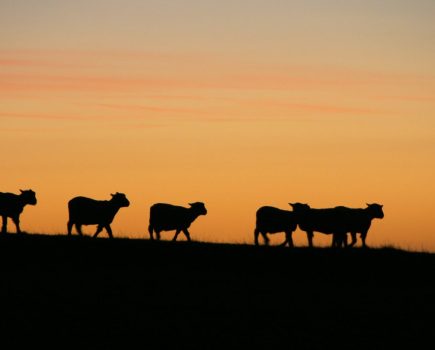New research on living mulches confirms some key soil health benefits from a system that requires careful tailoring to suit. CPM gets a sneak preview of the results.
“Use living mulches as a means of building long-term soil fertility.” MATT SMEE
By Mike Saull
When done right, a living mulch can help to improve natural soil structure as well as boost earthworm and beneficial insect populations. With this in mind, Agricology’s Matt Smee believes growers should consider the long-term benefits which a better soil ecosystem could impart.
While he’s a cautious advocate when it comes to living mulches – accepting many could be put off by the potential yield penalties incurred from a competitive understory – his research, which is in the process of being published, paints a positive picture in terms of soil health and ecology.
To begin, Matt defines a living mulch as a semi-permanent legume understory to a cereal crop that’s direct drilled into the field in its second year. The aim is to use the mulch to increase the resilience of the cropping system by improving the health of the soil and boosting ecosystem functions.
“While this is good in theory, we required more information on the system’s effects on a range of soil health indicators in order to establish how they could be a suitable approach across all farms,” he explains. Furthermore, he believes his research goes some way towards achieving that goal.
ON-FARM TRIALS
The work in question involved establishing and assessing different treatments on a mixed, organic farm – based on a clay loam soil – in Shropshire. In year one, a two-clover mix was established across half of the plots, the rest left fallow prior to planting the oat ‘cash’ crop in year two.
“White clovers are lower growing and so the cereal crop should stand above them when it gets going in the spring,” says Matt. “We used very small-leaved micro-clover Aberace at 70%, reinforced by a more traditional clover Aberhearld (30%) – the latter as an insurance policy just in case the smaller leaved variety failed.”
Having since completed the work, the new research indicates an improvement in physical soil structure across all living mulch plots after just one year. Using the Visual Assessment of Soil Structure (VESS) approach, the porosity, size and relative strength of the soil along with root distribution, colour and shape were improved, highlights Matt.
Whereas soils had a better crumb structure and appeared less compact, clearly benefiting from the living roots of the clover in the top 30cm of soil, he adds.
Matt believes a contributing factor could be that earthworm numbers increased significantly, with around double the number found in soils under the living mulch. Biologically, there was also a significant increase in the number of beneficial insects and the diversity of the species.
For example, carabid beetles – which feed on weed seeds and predate on pests such as gastropods – were significantly higher during monitoring of the trial in July, which arguably will have helped with early slug control.
However, assessment of numbers in October showed a reversal, with gastropods increasing and the number of carabids in decline. “Unfortunately, clover can harbour large slug populations in wet years and the initial high number of carabids simply weren’t enough to control them as the soils rewetted,” states Matt.
He points out that this can be a particular problem in rye which is favoured by slugs; high populations can decimate the crop in autumn/winter months.
“It’s another case of horses for courses – if you suffer from slugs then growing rye on a clover understory could be the perfect storm, demonstrating that if you do deploy a living mulch, the soils and fields you use it on require careful consideration,” comments Matt.
Reflecting on the bigger picture and experience across the UK, he points out that modern wheats aren’t particularly competitive when grown in a clover-based living mulch, typically suffering up to an untenable 25% yield penalty.
Oats are 15-20% lower yielding but do benefit from associated cost-savings compared to wheat, he says. Whereas rye, with its better tillering ability, gives a much reduced 8% yield penalty and so, is the more obvious choice in a clover-based system, explains Matt.
Irrespective of cropping choice, his advice is that cereal seed rates should be increased by around 20% to counter the effect of reduced tillering due to competition from the living mulch. He says management of the mulch is also important, particularly going into the second year when the cereal crop is introduced.
GRAZING
“On a mixed farm you could graze the field to keep the mulch at low levels; the alternative is to flail the crop when the cereal has established and the clover is dormant – this should be done before the cereal starts stem extension in the spring.
“Research in the USA suggests grazing a cereal crop will help to improve tillering and can help reduce early disease ingress in the cereal, so this is a positive for those mixed farms with such an option.
“It may also pay to apply a boost of nitrogen in the spring – for example, some are using digestate to help give the cereal crop the competitive strength it demands.”
From the outset, Matt stresses it’s important to start from a relatively weed-free position, particularly when it comes to perennials. “It’s easier to control annual weeds in a conventional or organic system and the relative abundance of weeds moves towards perennials, so the key is to control weeds such as docks elsewhere in the rotation.”
In terms of available nitrogen, he says this is much higher in subsequent crops under a legume living mulch system. “And in theory, the cover crop – as well minimising erosion – will also reduce over-winter nutrient loss.
“Research suggests there’s little effect on P and K availability, certainly no reduction and no negative effects. The system doesn’t appear to be pulling down supplies of these nutrients,” adds Matt.
Wider experience indicates some growers are now moving away from clovers to use black medic (a baby lucerne) and yellow trefoil as an understorey crop instead, on the basis that both have taproots and so there’s less fine root competition with the establishing cereal.
Similarly, lucerne is being increasingly used due to its deep tap root, which in theory, should reduce competition with the cereal plant as its predominance of roots in the top 10cm of soil.
Furthermore, Danish research indicates that lucerne can store up to 400kgN/ha every season and is a good living mulch for use with less competitive winter wheat. However, it requires chemical mowing in the spring to enable the wheat to grow away and yield.
According to Matt, following the second year, it may be possible to drill another crop into the living mulch to better effect as the clover may have lost some vigour.
To conclude, his is advice is to experiment at an individual soil/farm level with a 12m strip to assess different seed rates and mulches before entering into it more fully. Either way, he believes the negatives can outweigh the benefits. “Use living mulches as a means of building long-term soil fertility.
“As a single line practice, in one year, it may look bad but look at the pros and cons across the whole farm over a period of time – there are plenty of positives to be gained.”
This article was taken from the latest issue of CPM. Read the article in full here.
For more articles like this, subscribe here.
Sign up for Crop Production Magazine’s FREE e-newsletter here.




